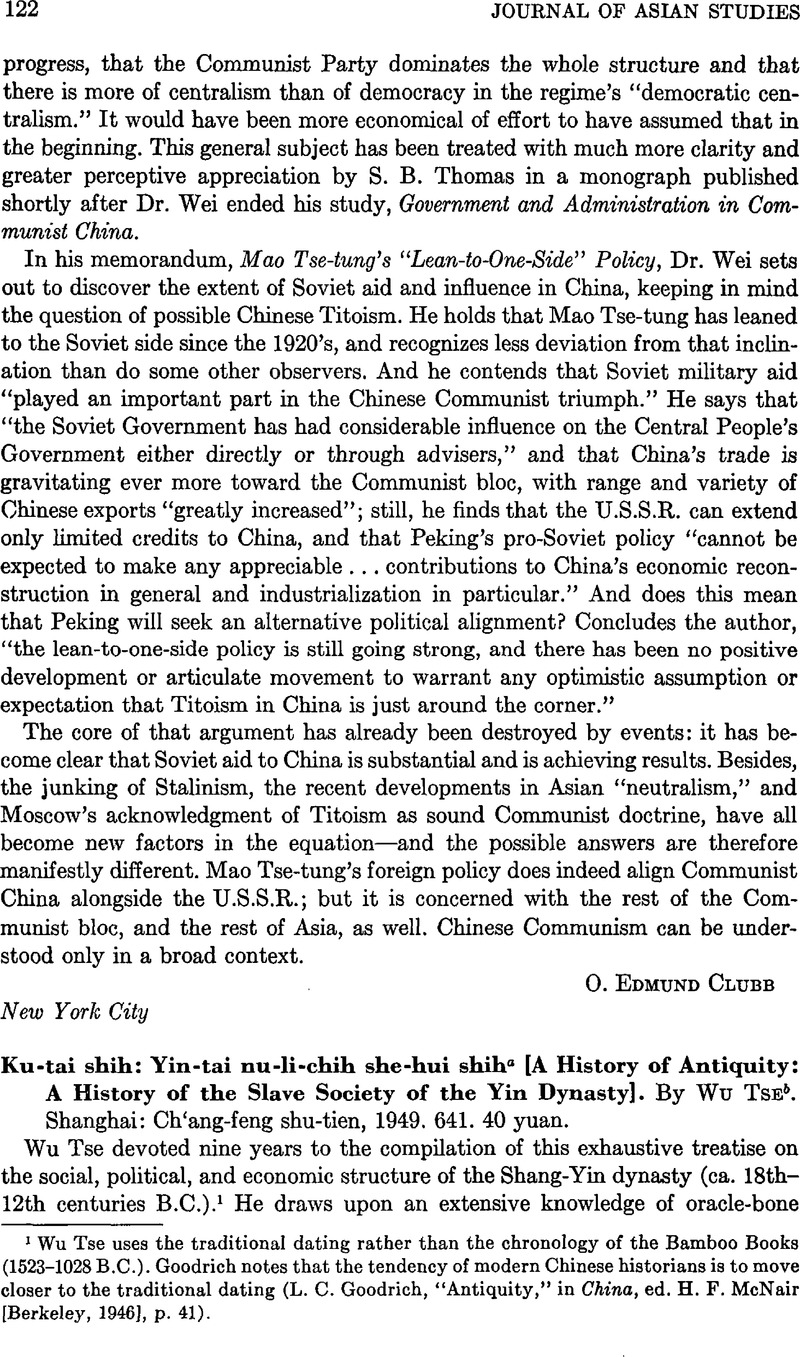No CrossRef data available.
Published online by Cambridge University Press: 23 March 2011

1 Wu Tse uses the traditional dating rather than the chronology of the Bamboo Books (1523–1028 B.C.). Goodrich notes that the tendency of modern Chinese historians is to move closer to the traditional dating (Goodrich, L. C., “Antiquity,” in China, ed. McNair, H. F. [Berkeley, 1946], p. 41).Google ScholarPubMed
2 See, for example, Fitzgerald, C. P., China, A Short Cultural History (London, 1935)' pp. 20–21.Google Scholar
3 Goodrich states that “the rule of succession was from elder to younger brother, thence to the sons of the eldest brother” (A Short History of the Chinese People [New York, 1951], p. 14Google Scholar). Creel informs us that apparently the throne passed on to the son only if there were no younger brothers left (Birth of China [New York, 1937], pp. 127–128).Google Scholar
4 Wu Tse records that, of 38 dynastic successions, 19 were from father to son and 14 from elder to younger brother, with 5 deviations from both practices (p. 511).
5 Waley, Arthur, Book of Songs (Boston, 1937), p. 253.Google Scholar
6 R. Wilhelm interprets the depiction of Chou Hsin as a monster of debauchery as representing the dogmatic statements of the new Chou ruling house (A Short History of Chinese Civilization [New York, 1929], pp. 93–94).Google Scholar
7 Other Chinese advocates of this “slavery” viewpoint are Lü Chen-yü, Kuo Mo-jo, Fan Wen-lan, Chien Po-tsan, Hua Kang, and Teng Ch'u-min.
8 Wilbur, C. M., Slavery in China During the Former Han Dynasty (Chicago, 1943), p. 241.CrossRefGoogle Scholar